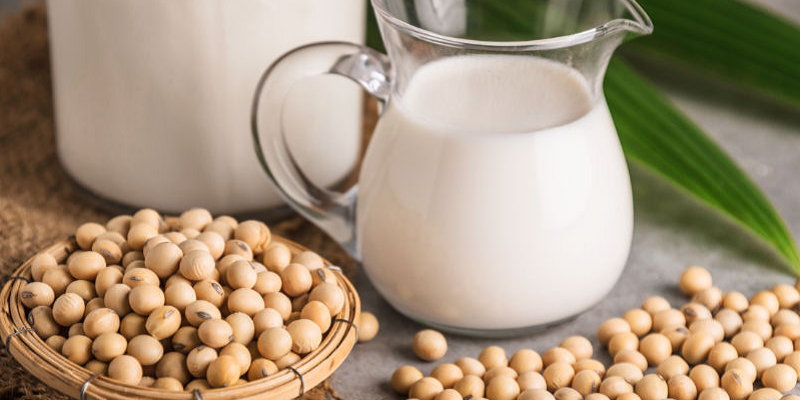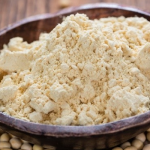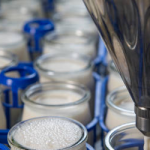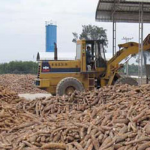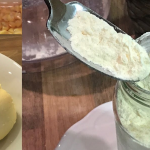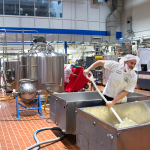Introduction
Soybean is a species of legume. It grows in pods, and these pods contains edible seeds which has numerous uses. Because of this, soybeans is considered one of the most useful legumes. The plant is classed as an oilseed rather than a pulse by the UN and Food and Agriculture Organization (FAO).
Fat-free (defatted) soybean meal is a significant and cheap source of protein for animal feeds and many packaged meals; soy vegetable oil is another product of processing the soybean crop. For example, soybean products such as textured vegetable protein (TVP) are ingredients in many meat and dairy analogues. Soybeans produce significantly more protein per acre than most other uses of land.
Traditional non-fermented food uses of soybeans include soy milk, Fermented foods include soy sauce, fermented bean paste and tempeh, among others. The oil is used in many industrial applications. The beans contain significant amounts of phytic acid, alpha-linolenic acid, and isoflavone
Soy Milk and Soy Products
Soy milk is a plant milk produced by soaking dried soybeans and grinding them in water. Soy milk is a stable emulsion of oil, water and protein. Soy milk can be produced at home using a soy milk machine. Soy milk is a complete protein and has about the same amount of protein as cow’s milk; it can replace animal protein and other sources of dietary fibre, vitamins and minerals. Soy milk contains little digestible calcium because calcium is bound to the bean’s pulp, which is indigestible by humans. To counter this, manufacturers enrich their products with calcium carbonate. Unlike cow’s milk, soy milk has little saturated fat and no cholesterol. Soy products contain sucrose as the basic disaccharides, which breaks down into glucose and fructose since soy does not contain galactose, a product of lactose breakdown, soy-based infant formulas can safely replace breast milk in children with galactosemia. Like lactose-free cow’s milk, soymilk contains no lactose, which makes it an alternative for those who are lactose-intolerant.
It has been suggested that soy consumption is associated with a reduction in Low protein lipoprotein (“bad cholesterol”) and triglycerides. Research has refuted claims that soy affects bone mineral density. Research has found no link between soy and increased oestrogens level in men, although studies thus far have been limited in duration.
For people who suffer from gout, moderate consumption of soy, which is rich in purine, is not associated with the development of gout, but high levels should be avoided. In a 100 ml (gram, g) serving, one commercial, nutrient-fortified brand of soy milk provides 80 calories from 4 g of carbohydrates, including 1g of sugar, 4g of fat and 7g of protein. This processed soy milk contains appreciable levels of vitamin A, B vitamins and vitamin D in a range of 10 to 45% of the Daily Value, with calcium and magnesium also in significant content. Soy milk aroma, smoothness and thickness in the mouth, colour and creamy appearance are considered desirable qualities, with favoured sensory attributes associating with protein content, soluble solids, and oil content.
In a study of taste attributes, soy milk flavoured with vanilla or sweet aromatic flavours and higher viscosity was preferred by most subjects, while dislike factors were bean or broth flavours. In another study, 54% of participants preferred the taste of cow’s milk, while 27% preferred soy milk, with sweetness and cream qualities identified as important flavour preferences.
Objective of the Experiment
This process is carried out to produce soy milk from soy beans
Materials and Equipments
1. Soya beans
2. Sodium bicarbonate salt
3. Sugar
4. Flavor
5. Ginger
6. Blending Machine
7. Cooking pot
8. Electric cooker
9. Muslin cloth
10. Bowl
11. Water bath
Procedure
1. Soak the soybeans overnight with 0.5% of sodium bicarbonate at room temperature.
2. The soybeans is then drained and blanched in 0.05% sodium bicarbonate solution in 1:10 ratio.
3. Drain the blanched soybeans and dehulled and blended into slurry with the aid of a blender and the addition of water at 2:1 weight by volume.
4. Sieve the obtained slurry using a muslin cloth.
5. The extract obtained is heated on the cooker at temperature of 75oC for about 20-30 minutes to kill all micro-organisms present in the extract.
6. After heating, allow to cool for 20 minutes then add sugar (as desired).
7. Fill the milk extract into bottles and pasteurized at a temperature of 70oC for 30 minutes. It is then cooled.
Conclusion
Soy milk serves as a supplement for more protein thus enabling its availability and good benefits.
Download “Processing of Soy Milk”
Processing-of-Soy-Milk.docx – Downloaded 0 times – 19.09 KB
